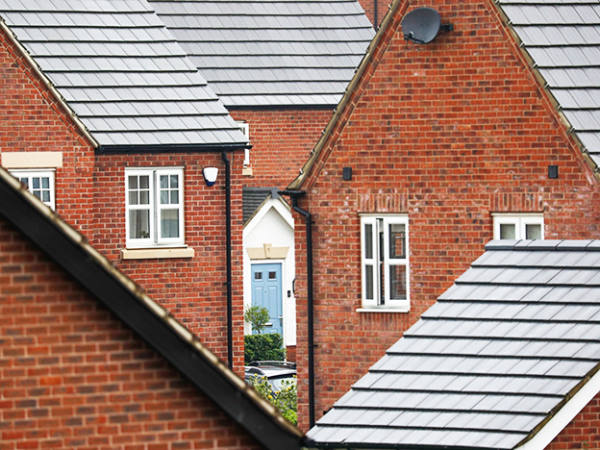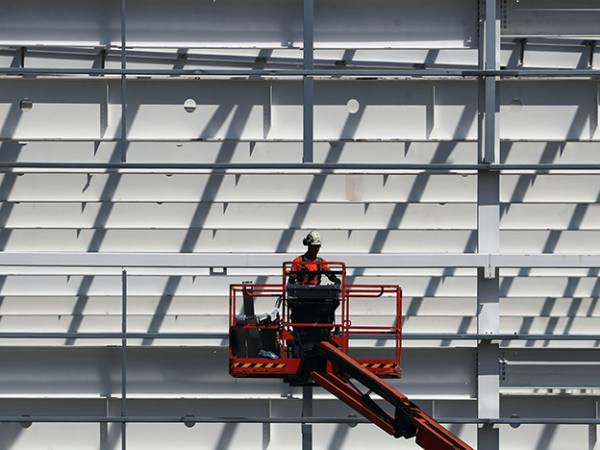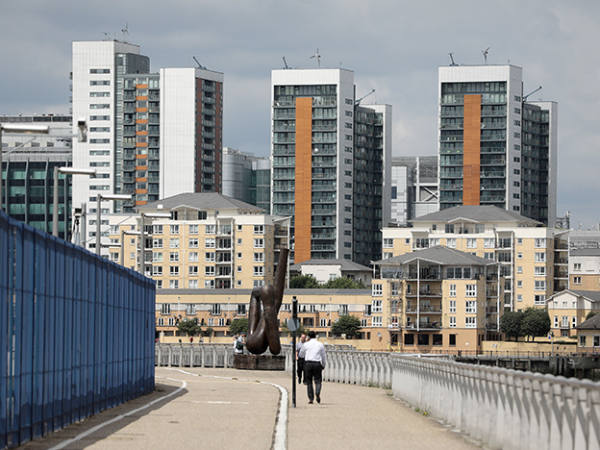Six years ago, a fire at Grenfell Tower in Kensington killed 72 people. A lot has changed since then. Last summer, the government introduced legislation aimed at protecting leaseholders from the costs of cladding removal, and earlier this year most large housebuilders signed a legally binding contract to remove cladding from buildings across the country, setting aside billions of pounds to do so.
Yet, there is still a long way to go. While Dame Judith Hackitt’s report concluded that aluminium composite material (ACM) cladding played a role in the spread of the fire, the underlying cause was a lax building system, and attempts to fix it have generated fierce debate. Moreover, campaigners argue that cladding removal has not been as straightforward as the government or the companies involved like to claim. They say that progress has been sluggish, that many have yet to contribute their fair share, and that even those who have committed to pay will probably need to pay more.
There are other issues, too. The fire has tainted Britain’s view of high-rise flats, driving their values down. The tragedy has also highlighted the leasehold system’s many problems, and although changes are planned, it now seems clear that this system will survive in some form.
In short, Grenfell continues to cast a long shadow over the listed housebuilders, construction companies, materials manufacturers and housing market as a whole.
The cost of cladding
The lasting legacy of the fire on the property industry has been awareness that ACM cladding is a big problem for UK housing stock. In 2020, the select committee on cladding remediation estimated that fixing the issue could cost up to £15bn, but that was based on work being done only on buildings over 18 metres tall.
So far, housebuilders have been forced to pay out £5bn through one-off payments and a levy. That leaves at least £10bn left to find, hence the government's letter to shareholders of Kingspan (KGP), Arconic (US:ARNC) and Saint-Gobain (FR:SGO) in April urging them to pressure those companies to pay up.
At the time, Martin Boyd, chair of leasehold rights charity Leasehold Knowledge Partnership (LKP), told Investors’ Chronicle that the materials manufacturers could end up paying a similar amount to the housebuilders. He also said he expected other companies to be in the firing line “from architects all the way down”, citing Hackitt’s report on the fire as evidence that the whole construction industry is at fault.
In the month since, there have been no further updates from the department for housing on how much, if anything, materials manufacturers will pay. That has frustrated the housebuilders’ lobbying group, the Home Builders Federation (HBF). Its executive communications director, Steve Turner, is critical of the government’s lack of progress in getting the materials manufacturers to pay up “despite commitments and despite having given [itself] the powers to do so”.
“Government has talked tough on large overseas companies but backed off when it came to the crunch and has instead repeatedly targeted British housebuilders,” he adds.
Arconic and Saint Gobain did not respond to a request for comment. Kingspan said it “remains very open to engaging and working with the secretary of state’s department, together with the Construction Products Association and other relevant stakeholders, to find the best industry-wide solution.” A source close to Kingspan said there was “nothing further to add” regarding updates since April’s letter.
Yet cladding campaigners argue that even the housebuilders' reported progress has been limited. Although housebuilders have agreed to set aside cash and have recorded much of this in their IFRS numbers, Giles Grover from campaign group End Our Cladding Scandal, says they have been left to “mark their own homework” when it comes to actually removing the cladding.
Grover, who is himself a leaseholder, argues that the lack of oversight regarding how the housebuilders identify which buildings need cladding removal and then carry out the works has created an inconsistent approach, with some being proactive and others doing little. “I know people in different buildings who haven’t heard anything yet [about cladding removal] and can’t get any information,” he says, adding that the approach should not be “just a case of ‘the contract is signed now: let them get on with it.’”
Grover says the inconsistency means that housebuilders might end up paying more than they had initially set aside. That inconsistency could soon be addressed, though. A source close to the housing department says that a cladding removal code of practice will be published this summer and that the department expects all developers to follow it. Meanwhile, a private select committee which several developers attended recently discussed an internal risk-assessment standard for non-cladding fire safety issues.
A housing department spokesperson told us: “All developers who have signed the developer remediation contract now have a legal duty to get on with remediation”.
Yet, even with continuity across codes and standards, there are other pressures building on how much the housebuilders will pay.
One is the mismatch between the government’s rhetoric and what has been pledged. Housing secretary Michael Gove has said in Parliament that all “life critical” fire safety issues with be dealt with, but the housebuilders are currently only on the hook for cladding-specific issues on buildings above 11 metres. As such, Grover suggests the government may push housebuilders to contribute more to general fire safety issues in the coming years.
The HBF’s Turner disagrees with the picture painted by Grover. “UK housebuilders have demonstrated their commitment to helping leaseholders and are single-handedly providing the solution to the cladding crisis, despite having only built a fraction of the affected buildings and the government’s own admission that the regulations of the day were at fault,” he says.
“As well as the remediation work, building regulations have been strengthened and non-combustible materials are banned for external wall systems of tall buildings,” he adds, although Grover notes that flammable materials are still permitted on lower buildings, which he strongly opposes.
The other issue is inflation. The LKP’s Boyd says that cladding removal costs have increased because of the increased demand for removal following the fire. Combine that with general build cost inflation and many of the housebuilders’ initial estimates on removal look out of date.
Reports of a legal bust-up between Barratt Developments (BDEV) and its collapsed former contractor Jessella over cladding removal at a 650-home building in Dalston in east London earlier this month highlight how challenging and drawn-out the process can be. Nationwide, Grover predicts that the cladding issue could roll on for another six years.
Figures from the housing department reveal just how slow progress has been (see chart) – just five more buildings have completed and signed off removal works since the start of this year. That leaves 131 left to go, but that number only counts ACM cladding. In a housing select committee, the government revealed that the number of buildings with non-ACM flammable cladding could be 11,700, and the number of those that are high-risk could be around 1,700. Both housebuilders and cladding campaigners complain that the government has not been transparent about the true scale of the problem.
The LKP’s Boyd blames the “glacial pace” of cladding removal on the government’s policy of dealing with the simplest removals before the most difficult, rather than the other way around. Increased costs and a lack of nationwide expertise in the specific skill of cladding removal may also be a factor.
System change
Grenfell has caused a push for fire safety beyond just cladding. Mandatory sprinklers in taller buildings, the creation of a new building safety regulator overseen by HSE, and the move towards having a ‘golden thread’ of information for each building's development are just some of the fire safety changes that have happened since the tragedy – with the latter two both stemming from last year’s Building Safety Act. All these changes to development bring additional costs to housebuilders, and yet another change could bring further costs: second staircases.
The proposed legislation, which Boyd predicts will be introduced in about a year, means that new buildings over 30 metres must have second staircases to allow people to escape. He notes that had Grenfell had a second staircase, the controversial ‘stay put’ policy would not have been in place, and many residents would have been able to escape safely.
Support for the policy in principle is widespread, but disagreements have emerged over implementation. A joint campaign from the Royal Institute of British Architects, the Royal Institution of Chartered Surveyors, the National Fire Chiefs Council and several others wants to see the policy introduced at 18 metres rather than 30. The HBF’s Turner says housebuilders support 30 metres, but remain “extremely concerned” about how the policy would impact housing supply in the short term.
The final and least tangible impact has been on the attitude towards flats in England and Wales. Last month, the Financial Times reported that, since Grenfell, flat price growth in England and Wales has diverged notably from house price growth, something that has not happened in any of the other economically developed countries the FT analysed or even in Scotland and Northern Ireland, which have different laws regarding building safety to England and Wales.
Boyd says the data is an indictment of the lack of trust people have in the safety of tall residential buildings, and he says there is good reason for this as many of the issues highlighted by Hackitt’s report remain. Meanwhile, Grover complains that the leasehold system – which only exists in England and Wales – makes fire safety issues harder to fix and thereby makes flats a less attractive investment, helping keep prices low.
The pair's suggested solution is to apply the same building safety standards to all buildings at all heights. The Building Safety Act, for example, currently only applies to buildings over 18 metres, but the housebuilders' contract to fix cladding on buildings over 11 metres indicates the direction of travel. They share the view that the Building Safety Act will eventually be expanded.
Should that happen, housing developers will have to stomach further costs, but in the long run, they will be building better quality, safer homes and injecting consistency into the system.












